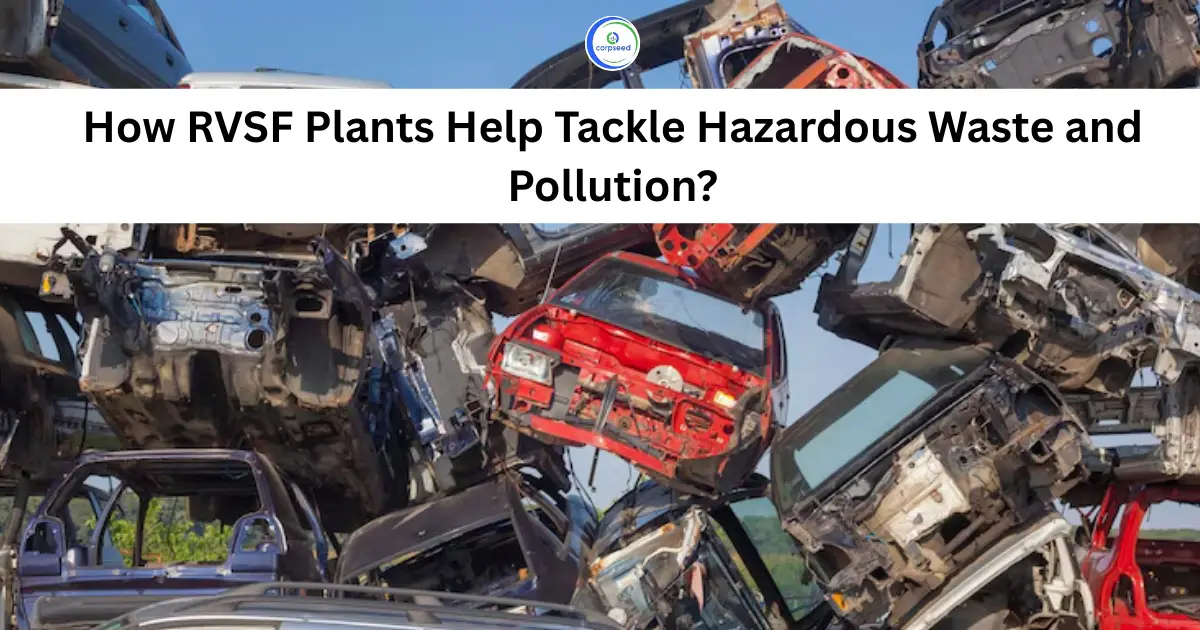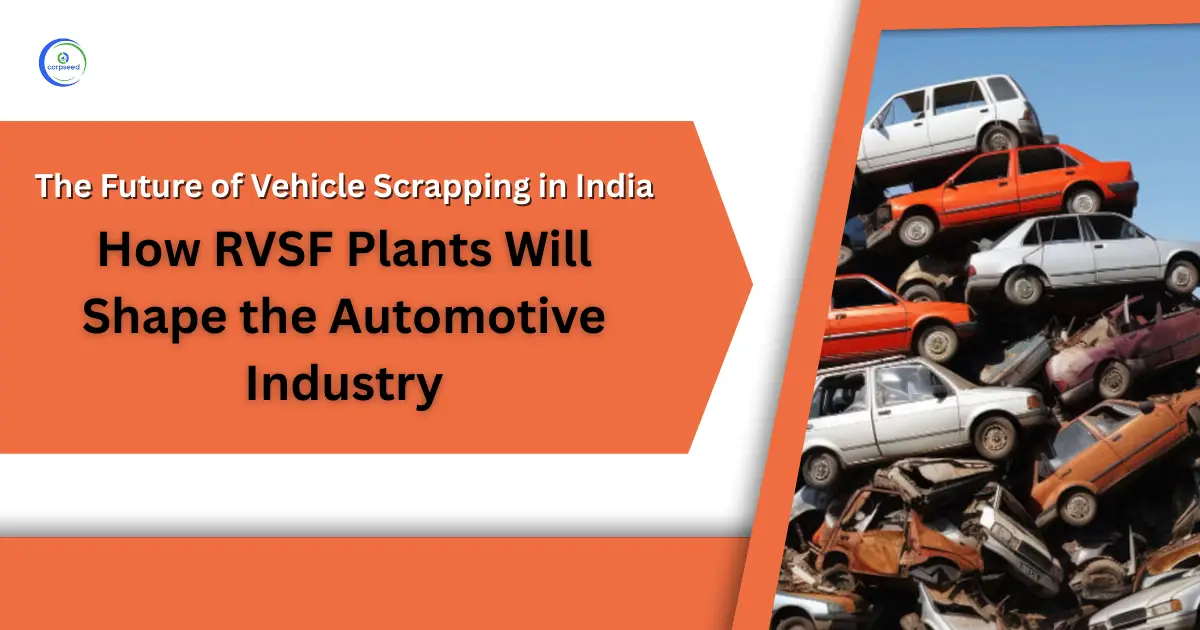With the increasing number of vehicles on the road, the management of end-of-life vehicles (ELVs) has become a significant environmental concern. Many vehicles, after years of use, become obsolete and need to be disposed of properly. Improper disposal of these vehicles can generate hazardous waste and pollution, which can cause serious damage to the environment. Registered Vehicle Scraping Facility (RVSF) plants are designed to address this issue. These facilities ensure that vehicles are dismantled and recycled in an environmentally responsible manner, reducing pollution and hazardous waste in the process.
Table of Contents
--------------Blog Contact Form-------------
Understanding Registered Vehicle Scrapping Facility Plant
Registered Vehicle Scraping Facility (RVSF) plants are specialized facilities that focus on the safe disposal and recycling of vehicles that are no longer in use. These plants are authorized by regulatory bodies to ensure compliance with environmental standards. The primary objective of the RVSF plant is to recycle as many end-of-life vehicle components as possible while reducing the environmental impact of the disposal process.
These plants are equipped with the equipment, technology, and infrastructure needed to dismantle vehicles in a controlled manner, with a focus on ensuring the recovery of valuable materials and the safe disposal of hazardous substances. The RVSF plant follows strict guidelines to ensure that all waste is handled correctly and pollution is minimized. They work in a systematic way to extract reusable parts like metal, plastic and rubber, as well as safely dispose of harmful substances like oil, batteries and gas. This process not only prevents pollution but also contributes to the conservation of resources by recycling materials that can be used in the manufacture of new products.
Also Read: The Need for RVSF Plants in India: Environmental and Economic Impact
How RVSF Plants Help in Tackling Hazardous Waste and Pollution?
Registered vehicle scrapping facility plant helps in tackling hazardous waste and pollution in many ways:
1. Safe Hazardous Fluid Disposal
Vehicles contain many hazardous fluids, such as oil, coolant, brake fluid, and transmission fluid. If these liquids are not properly disposed of, they can leak into the environment, causing severe pollution to soil and water sources. RVSF plants have the necessary infrastructure to safely drain, store, and dispose of these fluids in an environmentally friendly manner. Special containers and filtration systems ensure that harmful substances do not contaminate the environment, posing a potential health hazard.
2. Recycling of Valuable Materials
Most vehicles are made of metal, plastic, glass, and rubber, which can be recycled. RVSF plants are designed to recover as much of this material as possible. Steel, aluminium, and copper are particularly valuable and can be reused in the production of new vehicles or other products. By recycling these materials, the RVSF plant reduces the demand for raw materials, thereby conserving natural resources. This recycling process also reduces energy consumption compared to the production of new materials, further reducing the overall environmental footprint.
3. Proper Battery Handling
Automobile batteries, especially lead-acid batteries, contain toxic chemicals such as lead and sulphuric acid. These materials can cause serious pollution and health risks if disposed of improperly. RVSF plants have specific procedures in place to safely remove and handle end-of-life batteries. The batteries are either refurbished or recycled in specialized facilities to ensure that toxic substances are neutralized and the precious metals in the batteries are recovered. This reduces the risk of hazardous materials leaking into the environment.
4. Reduced Greenhouse Gas Emissions
Vehicles have air conditioning systems that use refrigerants like CFCs (chlorofluorocarbons), which are harmful to the ozone layer and contribute to global warming. If not properly extracted and disposed of, these refrigerants can enter the atmosphere and cause significant environmental damage. The RVSF plant is equipped with technology to safely remove and recycle refrigerant. In doing so, these facilities prevent the release of harmful gases into the atmosphere, helping to reduce the greenhouse gas effect and protect the environment.
5. Preventing Soil and Water Contamination
One of the major environmental risks posed by end-of-life vehicles is the potential for soil and water contamination. When vehicles are abandoned or improperly disposed of, leaking fluids, metals, and other pollutants can seep into the ground, affecting soil and water quality. The RVSF plant addresses this issue by carefully dismantling vehicles and isolating hazardous materials. Plants also take containment measures to ensure that no harmful substances are released into the surrounding environment. This practice helps protect natural habitats and protects ecosystems from long-term damage.
6. Creating Jobs and Promoting Sustainable Practices
The RVSF plant contributes to environmental protection not only through recycling and safe disposal but also by promoting sustainable practices in the economy. These facilities create jobs in the recycling sector, contributing to local economies and promoting green business practices. Additionally, by encouraging the proper disposal and recycling of vehicles, the RVSF raises awareness about the importance of plant sustainability and eco-friendly practices.
7. Reducing Air Pollution
When vehicles are improperly disposed of or burned, they can release toxic gases like carbon monoxide, volatile organic compounds (VOCs), and other pollutants into the air. The RVSF plant mitigates this risk by using a controlled environment to remove vehicles, where emissions are monitored and minimized. Advanced filtration systems and proper management of waste gases help reduce air pollution during the scrapping process. This not only improves local air quality but also contributes to the fight against climate change by reducing emissions associated with vehicle disposal.
Conclusion
The RVSF plant plays an important role in dealing with hazardous waste and pollution associated with end-of-life vehicles. By following environmentally responsible practices, these plants ensure that harmful materials are safely handled, valuable resources are recycled, and pollution is minimized. The efforts of RVSF plants make significant contributions to protecting ecosystems, conserving natural resources, and promoting sustainable practices. As the number of vehicles on the road increases, these features will become even more important in reducing the environmental impact of vehicle disposal.
This portion of the site is for informational purposes only. The content is not legal advice. The statements and opinions are the expression of author, not corpseed, and have not been evaluated by corpseed for accuracy, completeness, or changes in the law.
BOOK A FREE CONSULTATION
Get help from an experienced legal adviser. Schedule your consultation at a time that works for you and it's absolutely FREE.









